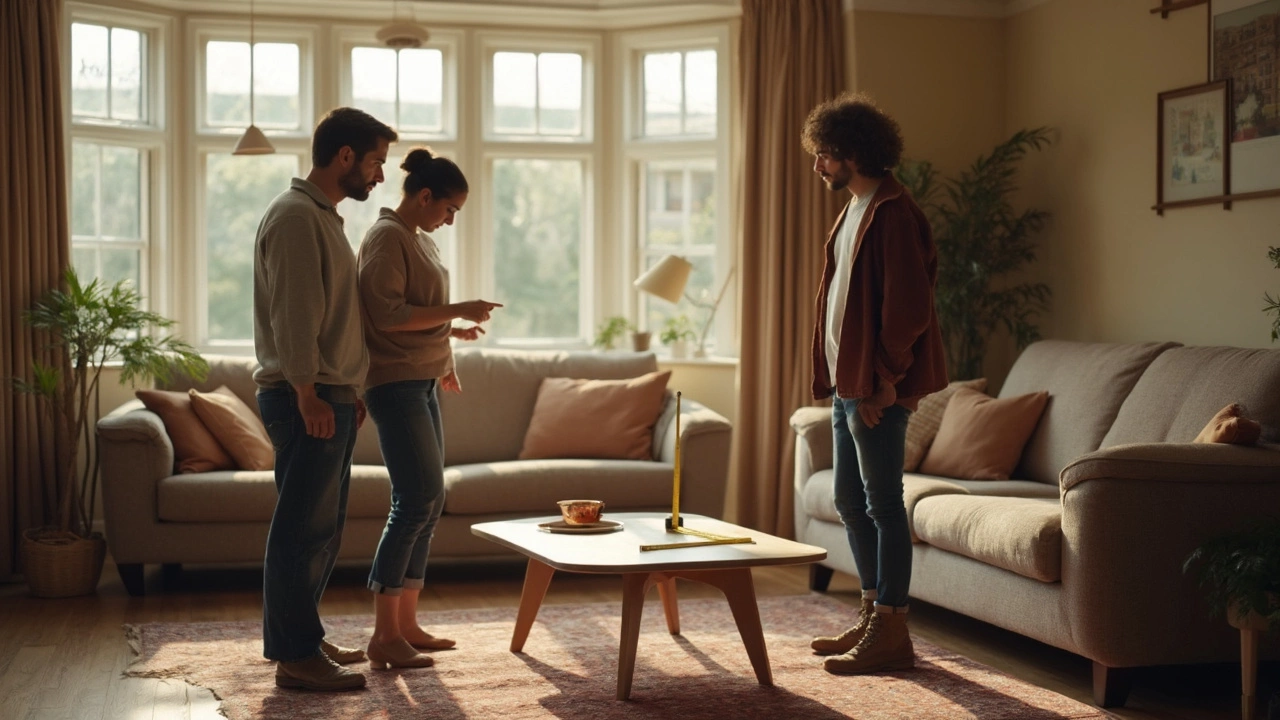Wondering if your coffee table can sit 2 inches higher than your couch? This guide breaks down what actually works in a living room and why height matters for comfort and looks. Get simple measurements, real-life examples, and easy tweaks if you're stuck with a 'too tall' table. Extra advice covers the tradeoffs, plus a few tricks for making an awkward setup feel right at home. You're not alone—lots of people run into this exact furniture dilemma.
Living Room Setup Ideas & Tips
Feeling stuck on how to arrange your living room? You’re not alone. Most people end up with a couch that blocks the TV or a rug that never feels right. The good news is you can fix those headaches with a few simple rules and a bit of trial‑and‑error. Below, we break down the basics so you can see results fast.
Furniture Layout Basics
First, pick a focal point. It could be a fireplace, a large window, or the TV. Arrange the biggest piece of furniture – usually the sofa – to face that point. Keep at least 30 cm of walking space around the sofa; you’ll thank yourself when you don’t trip over a coffee table.
If you have a corner sofa, pull it slightly away from the walls. This opens up the room and makes the sofa feel less cramped. Pair the sofa with a pair of accent chairs or a slim armchair opposite, creating a conversational zone. Remember: symmetry looks neat, but a bit of asymmetry adds personality.
When you place your TV, avoid putting it too low or too high. Eye level when you’re seated is the sweet spot. Also, keep the TV away from direct sunlight to reduce glare – a side wall or a slightly angled placement works well.
Finishing Touches
Lighting can make or break a setup. Use a mix of ambient, task, and accent lighting. A ceiling light gives overall brightness, a floor lamp next to a reading chair provides task light, and a pair of wall sconces add warm accents that highlight artwork or a bookshelf.
Rugs anchor the space. Choose a rug that’s big enough for at least the front legs of your sofa and chairs to sit on. This pulls the furniture together and defines the area. If the room feels too busy, go for a solid colour or a subtle pattern that matches your colour palette.
Curtains are optional but useful. If your windows let in a lot of glare, install light‑filtering panels instead of heavy drapes. They soften the light without making the room feel dark. When you don’t need privacy, keep the windows bare for a modern, airy vibe.
Lastly, add personality with cushions, throws, and artwork. Pick one or two colours that pop against your sofa and repeat them in smaller accessories. This creates visual flow without overwhelming the eye.
Putting all these pieces together doesn’t have to take weeks. Start with the focal point, work out the sofa placement, add lighting, then finish with rugs and soft goods. Before you know it, you’ll have a living room that looks put together, feels comfortable, and works for everyday life.
